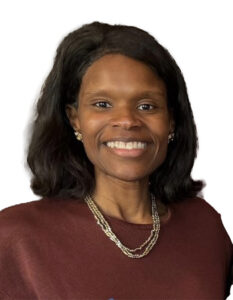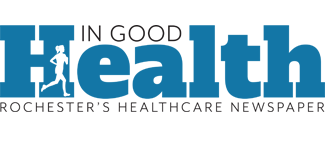Want to lose weight and keep it off? Medical doctor favors strength training more so than aerobic exercise. She also talks about how resistance exercise can help bone health
By Chris Motola
 Q: I understand you have a particular interest in promoting strength training for women as a form of preventive medicine, is that correct?
Q: I understand you have a particular interest in promoting strength training for women as a form of preventive medicine, is that correct?
A: For osteoporosis, yes.
Q: How receptive do women tend to be of this advice? Is there still concern among some patients that they might gain too much mass, or are those days well in the past?
A: Yes, absolutely, yes. There really is no longer a concern in terms of gaining too much muscle mass, particularly as women age. And that’s in part due to the fact that women naturally — because of the loss of estrogen — will be at more risk for the loss of muscle mass. And with that, they’re also at increased risk for lower bone density. And as you increase your bone density via strength training, you are also increasing your muscle mass.
Q: And what kind of resistance training do you find to be most effective?
A: It’s weight lifting, really. It’s not so much that you need to go in and lift really heavy weights. Just adding some light weights to your routine two to three times a week can be enough. And that’s for upper body strength. For lower body strength, there are a couple of things you can do. One thing you can do, if you’re walking on a treadmill, you can use a little bit of an incline. Or if you’re riding a bike, you can add some resistance to the bike. If you are walking outside, you can add, you either can find a course that has is a little bit hilly or use a weighted vest. We don’t really necessarily recommend using ankle weights anymore because that can put some stress on your knee and ankle joints. Even walking with little weights in your hands can be helpful.
Q: I’ve heard that, for elderly men, it makes an enormous difference in terms of the amount of muscle mass they’re able to retain. Do we see a similar effect with women as they age?
A: Absolutely, yes.
Q: How much of an impact are we looking at in terms of bone density? I know you said it had an impact, but how big of an impact, I guess, relatively speaking.
A: So what helps with the density of the bone is actually putting weight on it. It’s more than just your body weight, because actually that’s a different type of stress that you’re putting on your bones. With resistance training you’re building the muscle around the bones, you’re actually developing a protective layer over the bones, but also you’re putting the appropriate stress on the bones to maintain its health.
Q: I’ve been hearing more and more that strength is, itself, a longevity indicator.
A: Yes, it is. It’s very important for multiple reasons. So while we’re focusing on bone health, when we look at what strength training does in comparison to aerobic exercise you’re actually able to lose more weight with strength training and maintain that weight loss. Some researchers have even reported that it takes twice as much aerobic exercise than resistance training to get the same result of weight loss and maintenance of weight loss. So when you look at longevity you certainly can see that strength is a better predictor when you look at cardiovascular health in patients who incorporate resistance training. They have better cardiovascular health and the difference is even more pronounced in women compared to men.
Q: What’s the mechanism at play there?
A: Research studies that I’ve looked at say part of it is-one-it’s just metabolically what the resistance training is doing, but when you look at weight loss, for example, if you’re building muscle you’re actually reducing the amount of fat in the body. The muscle is essentially taking the place of some of the fat.
Q: I understand you try to take a holistic approach to your practice. How does strength training tie into your broader approach to primary care?
A: Well, where guidelines are set currently when we talk about bone density, there are screening guidelines that are set for women. There’s no specific screening guidelines for men. But for women, they should have their first bone density scan at 65 if they haven’t already had one. And so when a woman gets that bone density scan, there can be medications that can be recommended to the patient. But overall, our main purpose is to stabilize bone. But when it comes to increasing bone mass — and this applies to both men and women — calcium, vitamin D and resistance training are the three things that can actually build bone. That’s what I really try to get patients to understand. Medications can help, but they aren’t necessarily going to build your bones. There are things that you’re going to have to do in your lifestyle that are going to build your bone. When we talk about calcium and vitamin D, you can supplement those, but your absorption won’t be as good as if you get them in your diet.
Q: How do you catch osteoporosis in men since there aren’t screening guidelines?
A: A lot of times I will catch it on routine imaging for something else. So let’s just say a man is having back pain and we get an X-ray of his lumbar spine and the radiologist reads it as osteopenia. That will prompt me to look further and make a true diagnosis. Men also lose a lot of their main sex hormone, testosterone, as they age, which leaves them susceptible as well. But the solutions for men are the same: calcium, vitamin D and resistance training.
Lifelines
Name: Kristen Walker, M.D.
Position: Assistant professor of clinical medicine of primary care at the University of Rochester School of Medicine & Dentistry; medical director, Olsan Medical Group, Monroe County Medical Society.
Hometown: Baton Rouge, Louisiana
Education: University of Rochester School of Medicine & Dentistry; residency in internal medicine, University of Rochester Medical Center. 2016 – 2018; internship in internal medicine, University of Rochester Medical Center. 2015 – 2016
Affiliations: Strong Memorial Hospital; Highland Hospital
Organizations: American College of Physicians, Monroe County Medical Society
Family: Husband, daughter
Hobbies: Dancing, reading, playing with her cat, Christina

